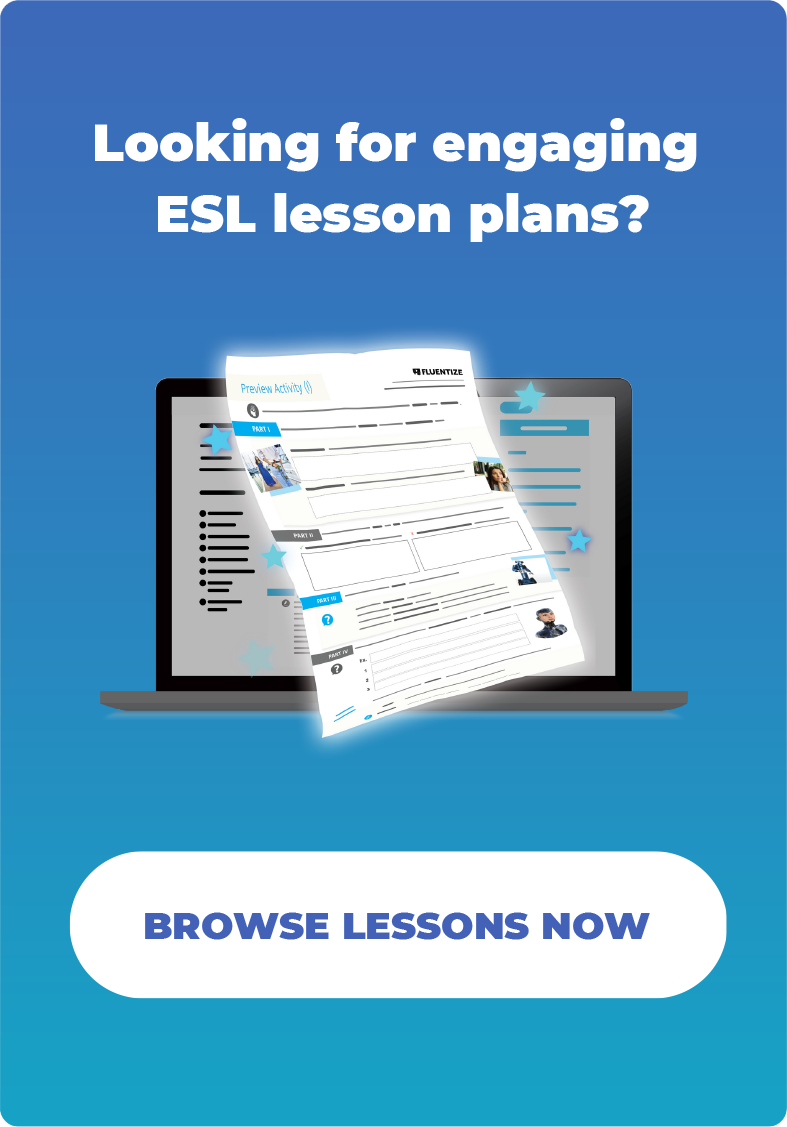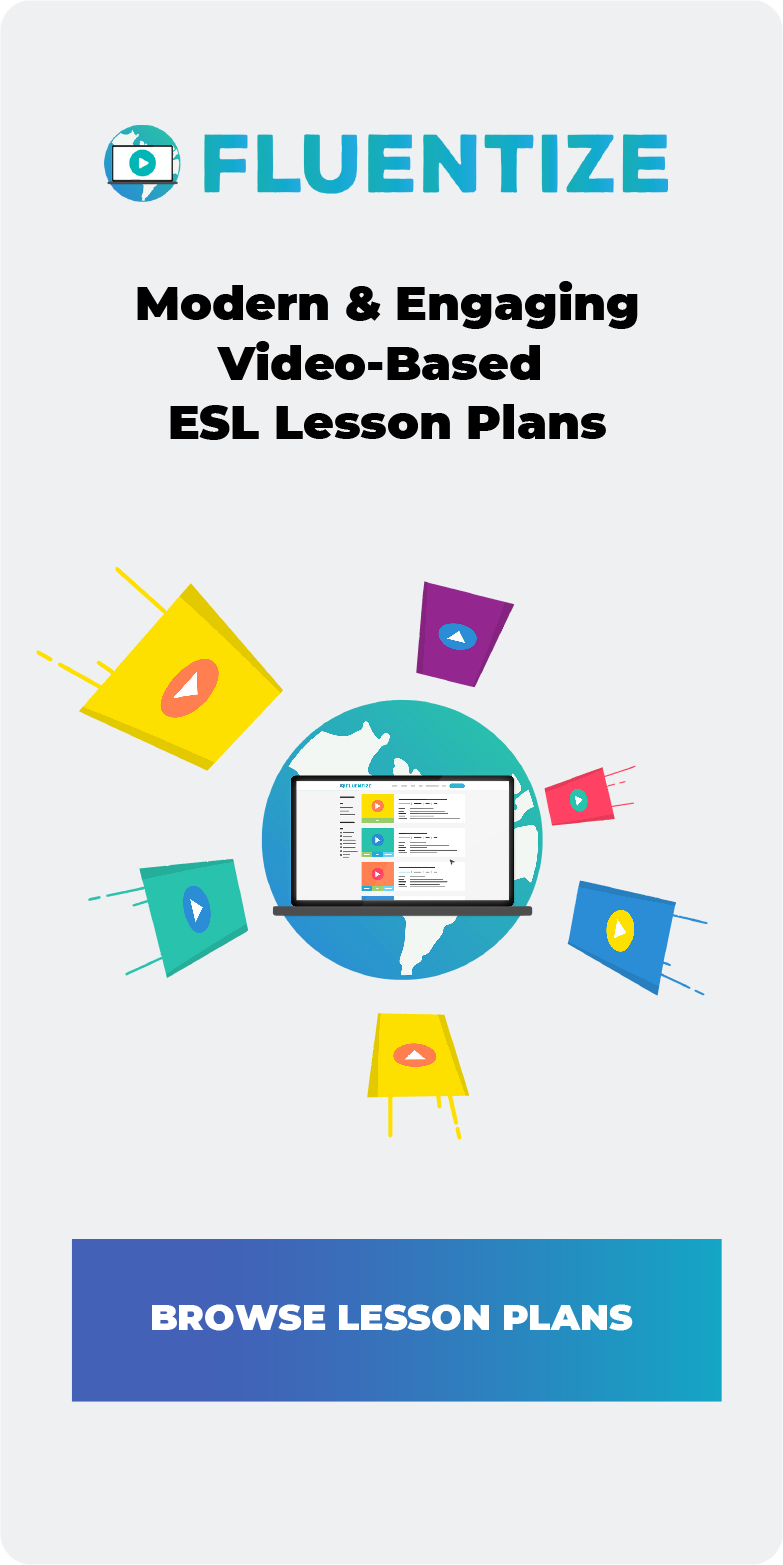Today, we’ll uncover all the important aspects of Dogme in language teaching. This is a revolutionary approach in ELT. It has been gaining more and more steam over the past 20-30 years. Think of Dogme as the minimalist art of teaching. It strips away the clutter and focuses on authentic human interaction.
Luke Meddings and Scott Thornbury are the pioneers of this approach. They comprehensively introduce it in their groundbreaking book, Teaching Unplugged: Dogme in English Language Teaching. This book is a valuable resource for teachers who want to learn more about Dogme teaching. It covers a lot more than this post does, so if you read this post and you’re interested to find out more, this could be a good book for you to check out.
What is Dogme in language teaching?
Dogme challenges conventional teaching norms. It focuses more on spontaneity and simplicity. It differs greatly from the ‘resource-heavy’ teaching methods you may use or were trained to use. Instead, it prioritises conversation-driven and learner-centered experiences. As a result, it reduces the reliance on coursebooks. It breaks free from controlled learning and instead lets learning happen naturally. This makes the classroom a lively place where students take the lead.

But have you heard people say that Dogme (or teaching “unplugged”), is just an excuse for teachers to be lazy and not prepare their classes? Let’s talk about why that’s just not the case!
Dogme in language teaching might seem like a simple approach. This is because it doesn’t involve hours of lesson planning or piles of teaching materials. But in reality, it’s quite the opposite! It’s all about being ready to adapt to unexpected situations.
Honing our skills
As a teacher in a Dogme classroom, you’ve got to be sharp, alert, and adaptable. It’s not about sticking to a script. It’s about taking those golden teaching opportunities as they come. It means tuning into what your students need, think, and feel. It’s about steering the class to make learning meaningful and exciting.
You’ve also got to have a solid knowledge of English! You need essential teaching skills. You need to be able to spot language issues as they come. In addition, you need to be able to give clear, constructive feedback. Being flexible and responsive is not about being unprepared. Rather, it’s about being attentive and ready to make learning fun.
In this approach, no two classes are the same. Every lesson is a new journey. Lessons are tailored to what’s happening in the room. It keeps things fresh, relevant, and engaging. It puts the students in control of their learning experience.
Therefore, Dogme is far from a ‘lazy’ approach. It actually puts a lot of responsibility on teachers to be fully present. Your goal should be to listen actively and guide the learning process. It’s about creating an environment where students feel heard and valued. Students’ ideas and experiences should be the main ingredients of the lesson.
So, what are the benefits of Dogme in language teaching?
Whenever we explore a language teaching method, we need to talk about its benefits. There are quite a few benefits of Dogme in language teaching. Let’s analyse the key ones:
1) It’s a time-saver
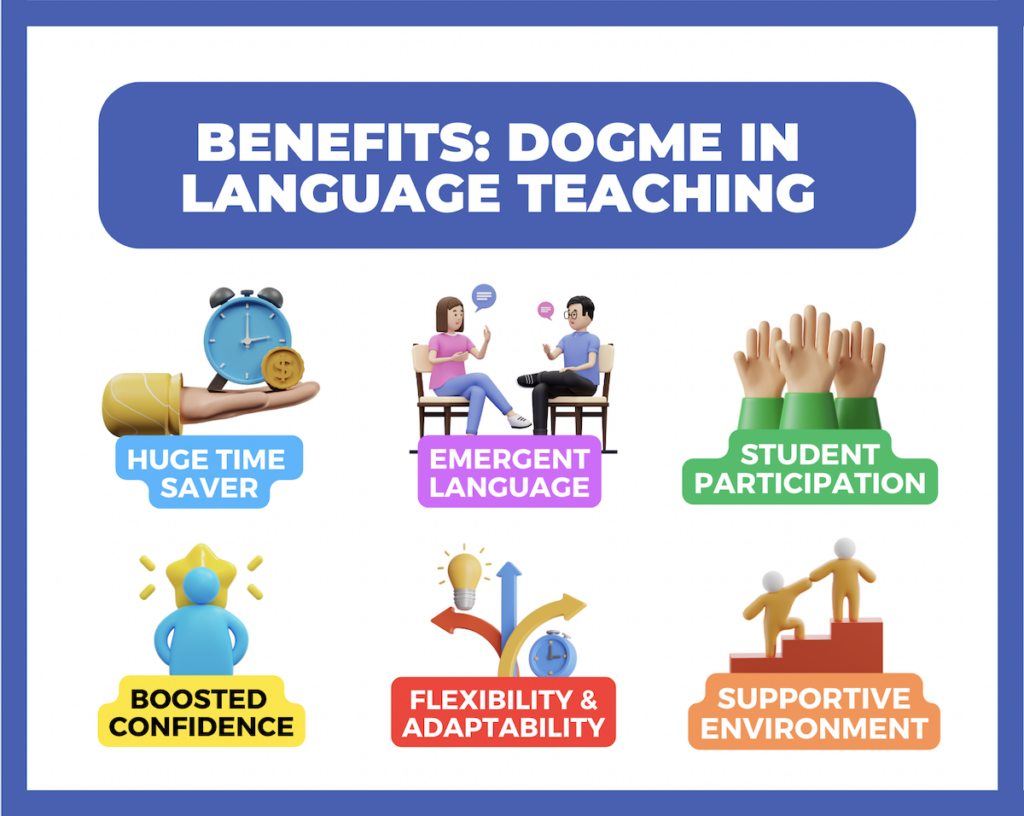
Dogme makes teaching easier and less stressful. It lets teachers skip the long hours of lesson planning. It jumps straight into teaching and connecting with students. It’s the opposite of tedious, CELTA-like lesson planning. This approach makes lessons more real and fun, without the extra work. It’s all about making teaching straightforward and focusing on what’s really important – building relationships with students. It’s important to point out that doesn’t mean you don’t need to prepare. It just means you’re planning less to gain more. You’re leaving room for the lesson to develop naturally.
2) It addresses emergent language
Dogme is very much about spontaneous conversation. This means teaching language as it emerges naturally. As a result, the lessons are more relatable. This is because they’re rooted in real, in-the-moment dialogue. Scroll down just a bit to find out more about emergent language!
3) It enhances student participation
The spontaneous and interactive nature of Dogme turns the classroom into a hub of ideas. Both teachers and students benefit from dynamic and engaging learning environments. This is what the Dogme approach is all about. It’s like turning up the volume on student voices. You let them drive the conversation and the learning process.
4) It boosts students’ confidence
Dogme makes learning about the students. It lets them speak up, make mistakes, and learn in a friendly space. This real-world practice helps students become more confident. As a result, it helps them use English more effectively in any situation.
5) It is flexible and adaptable
Dogme adjusts to fit the needs and interests of each student. It provides learning experiences that match everyone’s individual style and pace. It’s not set in stone, so it can change easily to make learning better. This adaptability means it can be integrated into diverse learning environments and curriculums. It ensures that every student has the opportunity to learn in a way that’s effective for them.
6) It creates a supportive learning environment
Dogme creates an atmosphere where students feel valued and heard. This supportive environment encourages students to open up, share their thoughts, and learn from each other.
Wouldn’t you love less teaching paperwork and more connection with the people? What about a class that drives meaningful conversations rather than sticking to the script?
Remember that Dogme can present initial challenges. This is especially true for less experienced teachers. This is due to its emphasis on spontaneity and its learner-centered approach. It differs from the structured and planned teaching methodologies most of us know. However, with patience, practice, and reflection, using Dogme becomes second nature. New teachers can learn the approach by incorporating Dogme moments during speaking activities. This helps teachers focus on monitoring, providing feedback, and emergent language.
How to handle emergent language in the classroom
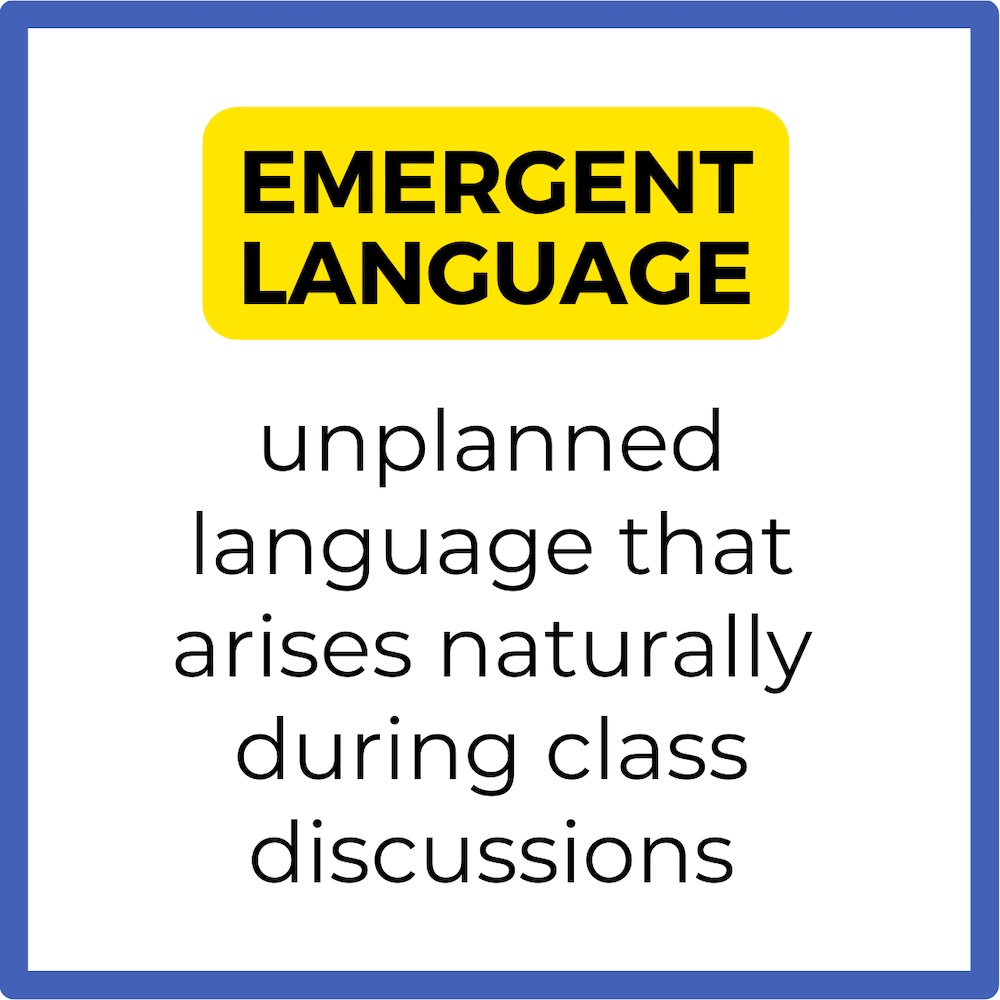
What is emergent language, and how does it relate to Dogme teaching? Emergent language is unplanned language that naturally arises during class discussions. It’s the words and phrases people use when expressing themselves spontaneously. This language can cover everyday speech, errors, new expressions, or anything in the moment. Emergent language is the result of unscripted, genuine language when people communicate naturally.
Dogme believes that language learning naturally emerges during the learning process. This differs from acquiring skills through pre-planned lessons. In Dogme teaching, the focus is on real communication and interaction among students and teachers. We want the language that learners use during these spontaneous interactions to be valuable and relevant.
In essence, Dogme teaching sees language as something that emerges from authentic interactions. This emergent language is an essential part of learning.
Richard Chinn, a teacher trainer based in London, suggests several effective techniques for handling emergent language in the classroom:
- Reformulate learner language: This technique involves rephrasing or clarifying what students have said. It helps learners understand their errors or awkward phrasings. The goal here is for students to hear correct language use. For example, if a student says, “I goed to the store,” the teacher reformulates it as “I went to the store” to correct their grammar.

- Extend discussions: In the class, we want students to expand on their ideas. When they begin speaking, we don’t want just one-word or quick answers. We want them to keep speaking and express ideas. As teachers, we should encourage students to explain their ideas in detail. This leads to richer language development. Teachers can ask follow-up questions or ask students to provide more details. This allows students to actively participate and build their language.
- Recast language: Recasting is about rephrasing. It subtly corrects students’ language while maintaining the flow of the conversation. When a student makes an error, the teacher can respond by rephrasing the sentence or statement correctly. However, they don’t explicitly point out the mistake. For example, if a learner says, “I have been to Paris last year,” the teacher can recast it as, “Oh, you went to Paris last year?” This technique helps learners notice the correct form without interrupting.
- Upgrade language: When necessary, teachers can upgrade learner language. For example, you can provide more advanced vocabulary or grammatical structures. This technique helps learners gradually progress to a higher level of proficiency. For instance, if a learner says, “I like the movie. It’s good,” the teacher might upgrade it to “I enjoyed the film. It was excellent“. This technique introduces more advanced vocabulary.

- Peer Interaction and Correction: Encouraging peer interaction and correction can also be a valuable technique. Teachers can create an environment where students collaborate and provide feedback to each other. When a learner produces emergent language, classmates can offer suggestions or corrections. This technique takes the pressure off the teacher and also promotes shared responsibility. The goal here is to create a supportive and collaborative learning atmosphere for all.
These techniques empower teachers to respond effectively to learners’ spontaneous language production. Overall, they enhance their language development during classroom interactions. In addition, they create an environment where learners receive immediate feedback and guidance. As a result, students effectively acquire language and improve communication skills.
How To Use Dogme in A Ready-Made Lesson Plan
As mentioned earlier, using the Dogme approach doesn’t mean being unprepared. You can still use materials and ready-made lesson materials. You’re just leaving room for the lesson to develop naturally.
In this post, we’ll take a look at one of our pre-made lessons from Fluentize. Our lesson plans can be adapted to Dogme teaching. In a Dogme classroom, teachers can use Fluentize lesson plans as a springboard for discussions that center on students’ interests and experiences. That’s what it’s all about. Let’s see our example lesson plan on Decision Making.
Emphasise real-life communication

Encourage students to share personal experiences related to decision-making spontaneously. This can be done during the preview and discussion section. As students answer the discussion questions, extend the conversation. Ask follow-up questions. For example, when a student is talking about “moving to a new city” as a big decision they’ve made recently, you could ask students more open-ended questions. For example, “How has this decision impacted you?” Or, you could ask them “How do you like the new city?”
It might help to occasionally imagine you’re talking to them as a friend, not as a teacher. This can facilitate natural discussions that mimic real-life communication. The main idea here is to build on the content already there and make the conversation natural.
In these discussions, don’t forget your role when it comes to upgrading and recasting language. If a student says, “It’s a big city and sometimes I get lost”, you can upgrade it to “Oh, so you’ve been feeling a bit disoriented in the new city?”. Always try to be alert. Look for opportunities where you can improve students’ vocabulary bank and phrasing ideas. Revisit this new language later at the end of the lesson.
Use learner-generated content
Let’s look at Part 3 of the preview activity. Instead of having students talk only about the four factors in the instructions and images, you could ask students to make their own list of factors. Here, you may find students come up with ideas like “sleep” and “stress”. Dive deeper into these concepts as students discuss. If it’s a group class, you can encourage peer interaction and have them make their lists together. Essentially, ask students to brainstorm and contribute their own examples. This fosters a more learner-centred approach.
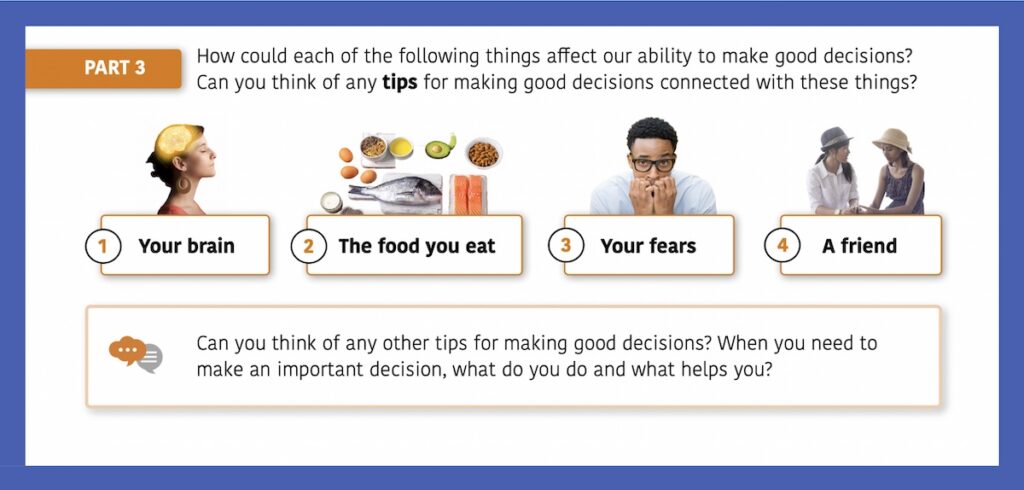
Flexible video discussion
In this lesson plan about decision-making, students watch a video. After viewing, let the discussion flow naturally based on what students found interesting. A Dogme technique would be beginning the post-viewing discussion by asking students about their personal experiences with decision-making. You want to connect the discussion to the video’s topic. Encourage students to share any new vocabulary or insights they gained while watching the video spontaneously. Relate the video content to real-life situations and ask open-ended questions to promote critical thinking and debate among students.
Don’t stick to only the lesson materials! You should feel free to build upon it. In other words, don’t be afraid to deviate. You can come up with and ask questions as you see fit. For example, let’s take a look at part 3 of the Viewing Follow-up section:

Even though it’s not contained in the materials, you could ask students: “Have you ever been in a similar situation as the man? What did you decide in your case and why?” Or, you could ask students “If you were his friend, what would you advise him? Why?”
Or, as the video touches on topics like neuroscience, explore this aspect further and how it can apply to their lives. For example, ask questions like, “How do you think understanding the brain can help us make decisions in our daily lives?”
Finding these moments is a type of skill that becomes easier over time. With experience, you’ll be able to implement these simple Dogme teaching techniques, almost as second nature
Allow the discussion to flow naturally based on students’ interests and contributions. Make it a student-centred and engaging learning experience. Consider having a shared document on Google Docs or a digital platform where you record new vocabulary, insights, and key discussion points. This serves as a useful reference for future lessons.
Facilitate peer interaction
In the decision-making communicative task, focus on pair or group discussions where students can share their thoughts and advice on real-life decisions they or their friends are facing. This promotes authentic language use.
While students are doing this, address new phrases and vocabulary. Listen and record how students may spontaneously express ideas during discussions. We touched on this a bit earlier, but it’s important to emphasize.
Encourage them to ask about meanings and usage. Use a notebook, online whiteboard, or physical board to record what students say. You can come back to this later at the end of the lesson.
Adapt the lesson on the go
In the decision-making communicative task, encourage students to bring their own real-life decision scenarios into the discussion. This makes the content more relevant to their lives. You’ll see that our lesson materials often prompt this (“It can be real or imaginary.”) as you can see in this part of the lesson below.
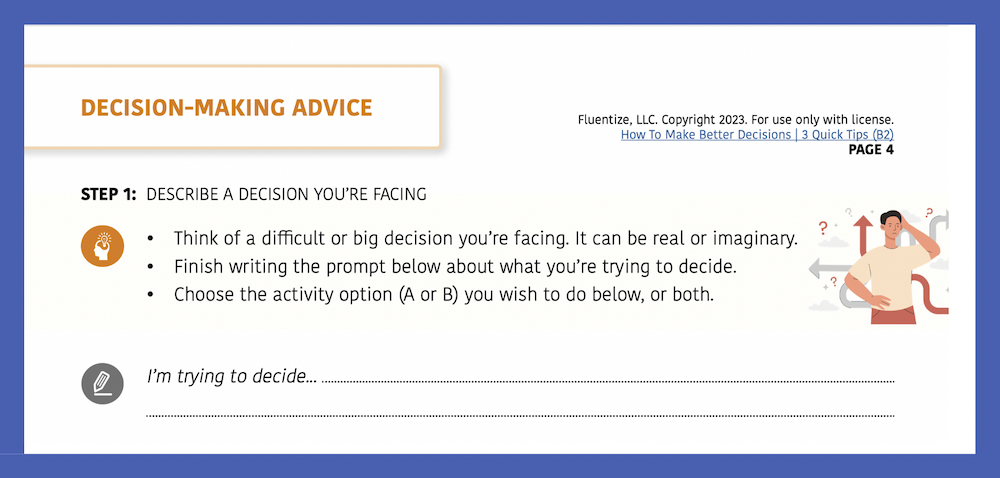
Then, you have two directions where you could take the lesson. When there are options in a lesson, this is another opportunity where you can be spontaneous. You may have to decide in the moment whether you want to go with the discussion in Option A, or role play in Option B.
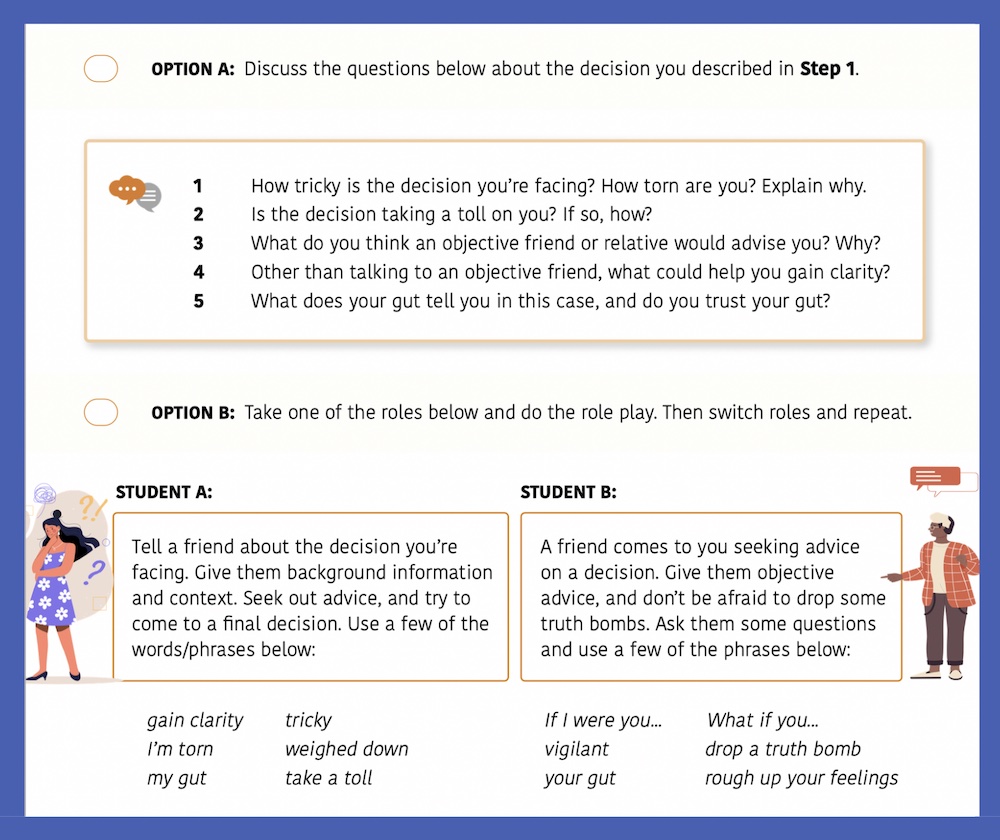
One way to adapt this on the go is to simply choose a few of the phrases provided there in the lesson. Have students explain the decision they wrote about in Step 1 using some of these phrases. To do this, while students are writing about their decision in Step 1, you can write down a few of the phrases in the lesson materials you want students to practice, such as:
torn – take a toll – my gut – tricky – gain clarity
After students write about the decision they’re making in Step 1, simply instruct them to talk about the decision using the vocabulary words provided.
Although this may seem controlled, don’t worry! You can be flexible during the discussion phase and let the conversation unfold naturally.
As you can see, it’s ok to use a pre-made lesson and implement Dogme teaching techniques at the same time. Just because Dogme is more about unplanned teaching doesn’t mean you can’t use planned lesson materials. It’s all about adapting them on the go and focusing on your students.
And once in a while, remind students that their spontaneous contributions and discussions are valuable. We want students to know that this approach has a positive impact on their language development.
Challenges and solutions in Dogme language teaching
Yes, Dogme comes with its unique set of challenges due to its unpredictable nature. But we can overcome these obstacles. Here are a few tips:
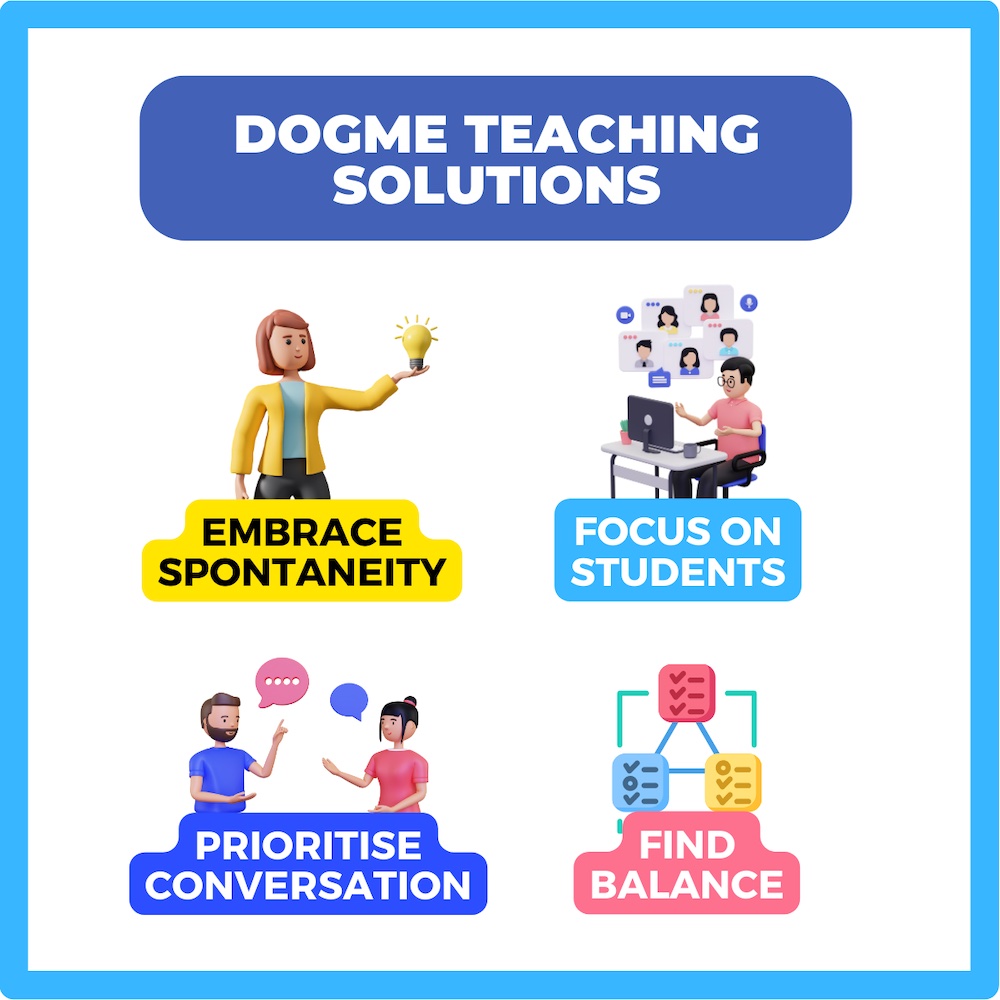
- Embrace spontaneity. Learning to improvise is crucial. Be prepared to adapt your lessons on the fly and grab teachable moments as they come up. For instance, if a student brings up an interesting point or question, be ready to shift the lesson focus to explore it in depth.
- Keep it about the students. Make sure lessons remain student-centered, not resource-centered. This is about their needs, questions, and contributions shaping the lesson. It means listening more and letting the students take the lead in discussions and activities.
- Implement Dogme smoothly. If you’re concerned about integrating Dogme, don’t worry! It can complement your existing teaching style. Start with smaller, manageable Dogme moments within your lessons before transitioning to full Dogme sessions.
- Prioritise conversation. Center lessons around dialogue, allowing students’ expressions and interactions to guide learning. Encourage open discussions and use them as a basis for language exploration and grammar discovery.
- Value student contributions. Use students’ experiences, ideas, and language as learning resources. Encourage them to share their thoughts and experiences, and use these as real-world materials for the lesson.
- Find the right balance. Maintain a flexible yet clear structure in your lessons. This ensures a guided framework while leaving room for unplanned learning opportunities. For example, have a basic plan, but be willing to stray from it if students show interest in a different topic.
Start with smaller Dogme-inspired activities within a lesson. This could be a discussion or a feedback session. This will help you gradually get used to the approach. Embrace unpredictability, adapt to students’ needs on the go, and make learning as engaging and meaningful as possible.
Closing thoughts on Dogme in language teaching
Dogme is more than just an approach. It’s a mindset and a reminder that simplicity and spontaneity can be our best friends in class. Hopefully, you’ll see how it can create meaningful learning experiences. It may challenge your comfort zones, but the rewards—seeing engaged, proactive learners—are huge. What do you think about Dogme in language teaching? Do you already use some components of this approach? If so, how has it helped you? Let us know in the comments below!


